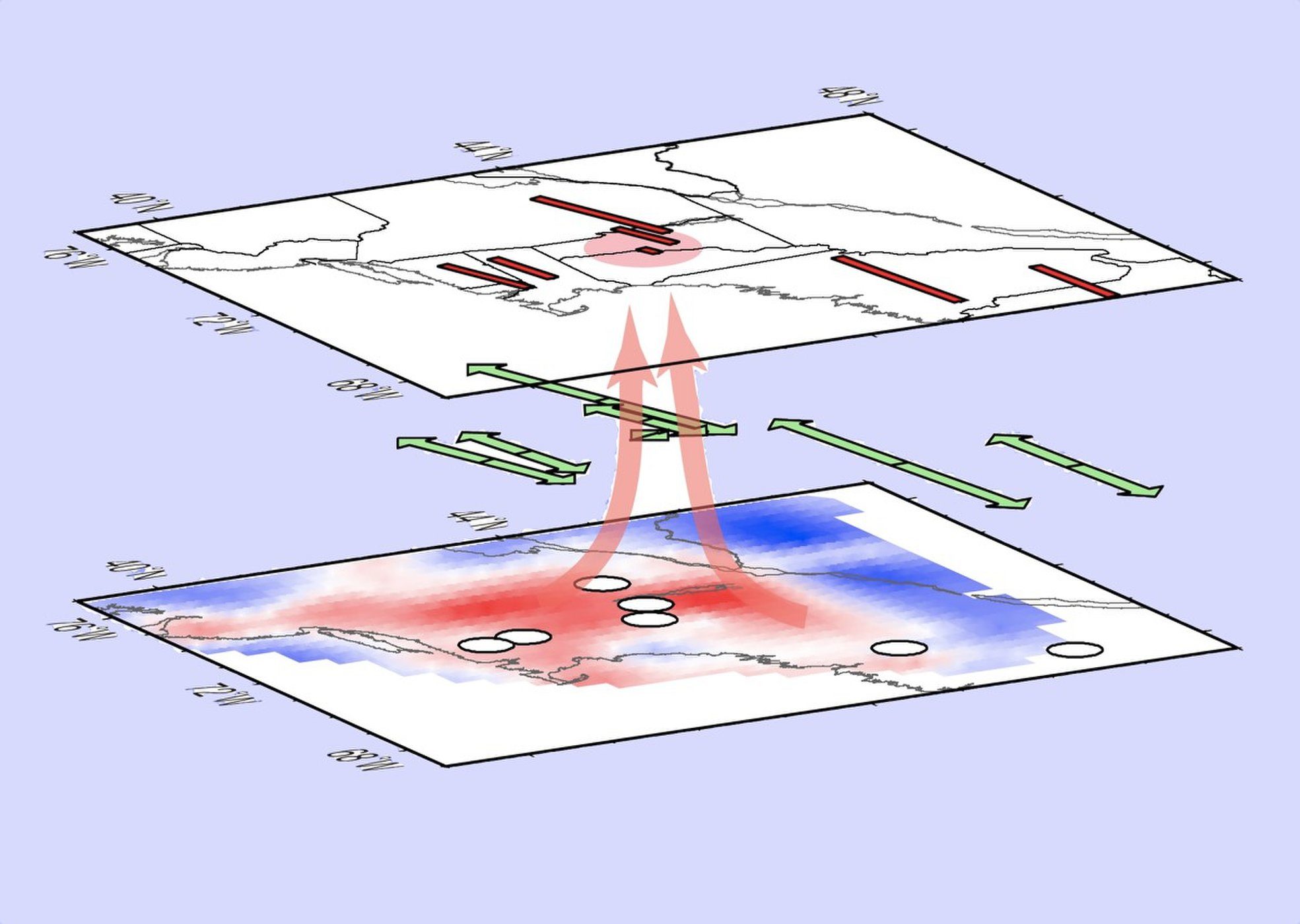
But a project that helped image the layers of rock below the continent with unprecedented clarity has helped reveal a small, unusual feature that seems to be a relatively new "blob" of hot, rising rock below part of the U.S. Northeast.
Exactly what caused this blob and whether other similar blob structures might lurk under other continents isn't clear, said study co-author Vadim Levin, a Rutgers University geophysicist, but it raises plenty of interesting questions. The work on the blob was published online Nov. 29 in the journal Geology and presented Monday (Dec. 11) at the annual meeting of the American Geophysical Union in New Orleans.
The unusual feature had been spotted before, when scientists used the seismic waves that routinely ricochet through the Earth's interior to reveal some of the structures hidden below our feet. Such waves travel at different speeds and angles through different types of rock, including rocks of different temperatures and rock moving in different directions. The small feature below the Northeast showed up as an area of unusually high temperature, but the pictures were pretty fuzzy.

Or, to compare it with another world-illuminating project, "it is comparable to sending Hubble up," he said, referring to the legendary space telescope.
With the help of undergraduate students working on thesis projects, Levin and his colleagues found that the telltale stretch marks left when the rock in Earth's interior moves were missing from the same area where the rock below the surface appeared to be hotter.
Altogether, the evidence suggests that a blob of hot rock some 100 miles (160 kilometers) down is welling upward in the upper part of Earth's mantle (the layer of Earth just beneath the crust), the study authors said.
The exact source of this blob isn't clear; it doesn't have the deep roots down into the mantle seen at hotspots such as those that lie below Yellowstone or the Hawaiian Islands and fuel the former's hot springs and Hawaii's volcanoes found at each place, Levin said.
Barbara Romanowicz, a geophysicist at UC Berkeley who was not involved in the research, said in an email that this blob could be linked to a finger of material deeper in the mantle that she and one of her graduate students are describing in work currently being reviewed for publishing in a scientific journal. That finger extends horizontally along a hotspot track (or the trace left as tectonic plates moved over a volcanic hotspot) from the mid-Atlantic ridge - the seam that runs down the middle of the ocean floor - inland and northward, she said.
"There may be other features like the one they document along this track, tapping into the deeper conduit. The data are just not there to see them," Romanowicz said.
The blob's small size and hot temperature also suggest it is a relatively young feature - on the scale of tens of millions of years old - because it likely would've cooled off if it were younger, he said. There are also no surface features that could be connected to it, as it sits well below the bottom edge of the tectonic plate, Levin added.
Mechanisms that cause bubbles of mantle material to form closer to the surface than normal could be the culprit for the blob, he said, but that would take more work to investigate.
Another big question is whether this is a feature that happens more commonly under Earth's continents, or if it's more of a curiosity. To answer that, scientists would need to deploy versions of EarthScope across other continents to get the same kind of precise images obtained for North America, Levin said.
"This is the kind of resolution we need everywhere, and I would say, not only under continents, but also under oceans. Perhaps even more so under oceans," Romanowicz said. Cost and technical challenges have stymied such efforts to date, but there is a renewed interested in implementing such networks. "This will help figure out the plumbing in the Earth's mantle, and much of the action is under the oceans," she said.



Reader Comments
Thanks for mentioning this book. I haven't read it, but it looks worthwhile. Here's a link to download it.
HYDRIDIC EARTH
[Link]